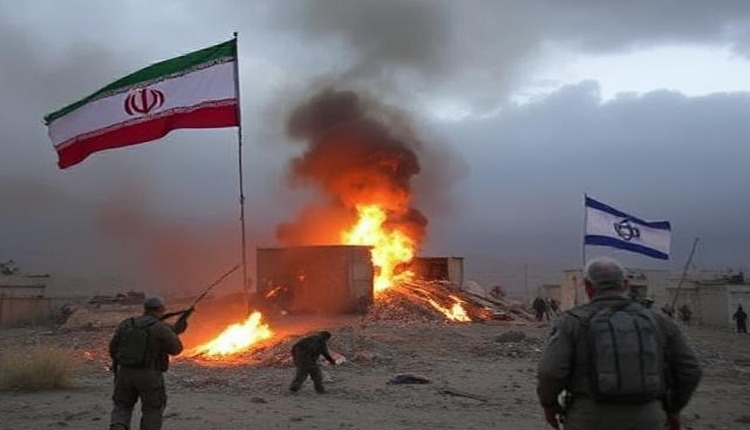New Delhi: B-2 stealth bombers from the United States launched a costly and daring precision strike on Iranian nuclear targets at Fordow, Natanz, and Isfahan. This move further raised the Iran-Israel war and, at a time when tensions in West Asia are at their peak, displayed unprecedented military technology.
In a post on Truth Social, President Donald Trump described the operation as a spectacular military success, stating that the target, Fordow facility, was completely destroyed.
Missouri: From the Whiteman Air Force Base, B-2 Spirit bombers loaded with two GBU-57 Massive Ordnance Penetrator (MOP) bunker buster bombs had previously lifted off undetected to fly through Iranian airspace. Fordow, a hardened uranium enrichment facility buried 250 feet into one of the mountains near Qom, was hit with 12 MOPS dropped by bombers, and two MOPs were hit on Natanz, whose 30 Tomahawk cruise missiles fired by Navy submarines hit Natanz and Isfahan.
To safeguard the Fordow facility, the B-2 carried Russian-supplied S-300 air defence systems that were rendered useless by the stealth aircraft’s radar-hiding technology, which instead appears on monitoring devices as a small bird. Lt Gen. (Retd). This ability to nullify Fordow can be achieved only by the B-2, which is equipped with stealth technology supplemented by the penetration power of MOP, the general stated. Vinod Khandare is a retired Indian defence officer.
The biggest enrichment site, Natanz, in Iran, and a research facility in Isfahan suffered heavy losses, but Tehran said that the Atomic Energy Organisation had only been injured in places and that there were no radiation leaks, which was confirmed by Saudi Arabia and the IAEA.
Following US President Donald Trump’s bold move to curb Iran’s nuclear ambitions, Israel was elated, with Israeli Prime Minister Benjamin Netanyahu hailing the decision as a historic turning point. Iran, which claims its program is peaceful, nearly doubled the number of deaths to 452 in a single unified volley of U.S.-Israeli attacks; it hit back with a 40-missile volley, which injured 19 Israelis.
Iran Foreign Minister Abbas Araghchi denounced the attacks as a “serious breach” of international law, threatening “perpetual ramifications” on X. Hardliner Hussain Sharifa Mauer called missile strikes on U.S. facilities in Bahrain and the blockade of the Strait of Hormuz the danger of a global oil crisis. That would escalate into a regional conflict, warned Jonathan Panikoff of the Atlantic Council, citing Iran’s 2,000-missile inventory and exhausted proxies, such as Hezbollah.
There is still a fear of the environmental effects, with researchers such as François Diaz-Maurin raising the fact that there could have been huge seismic imbalances or uranium leaks if the attack had hit any uranium labs and no off-site radiation was monitored. India, which depends on Gulf oil and has its own 9-million-strong diaspora, is taking an avid interest, reminding itself of its accuracy attacks. With Iran vowing retaliation and the U.S. demonstrating its readiness to take further action, the stability of West Asia is in jeopardy.



Comments are closed.